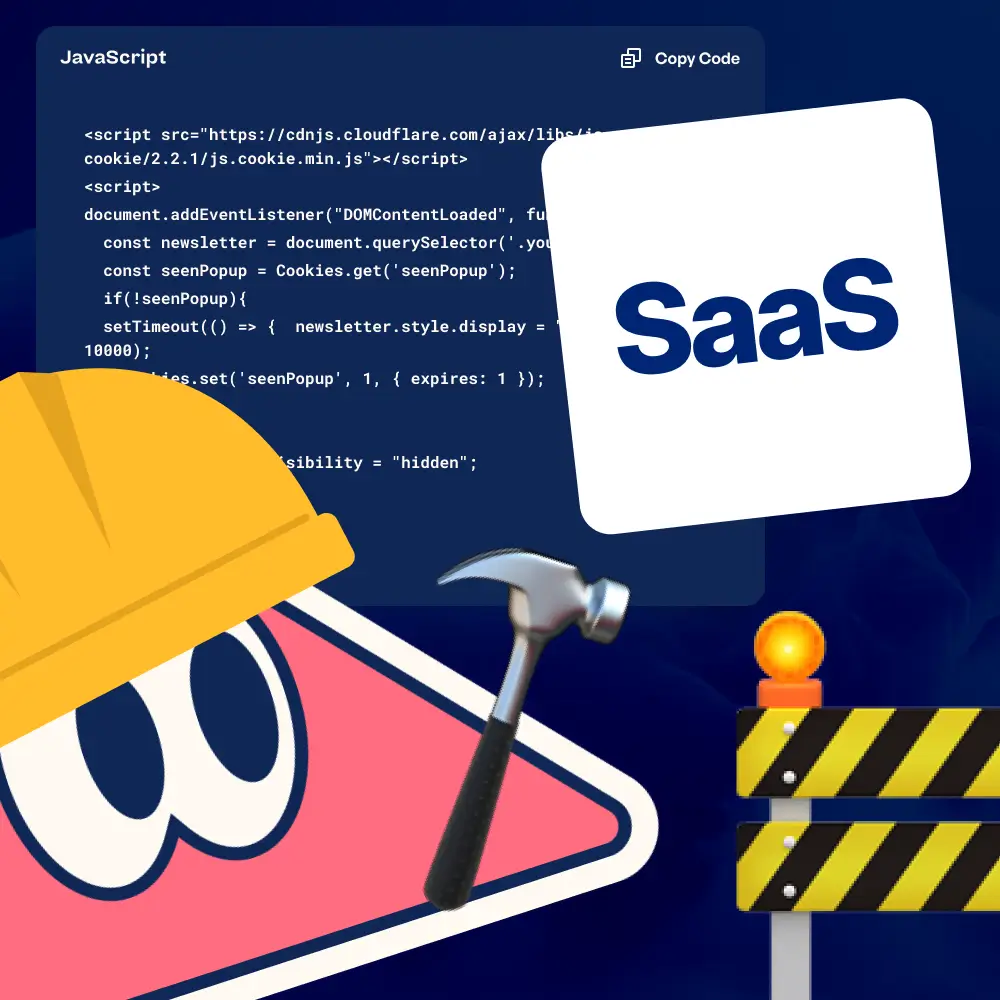The Silent Killer of Fast-Growing SaaS Companies
Your SaaS product is doing well. Users are signing up, revenue is climbing, and your team is expanding. But beneath the surface, your infrastructure is showing cracks. Pages load more slowly during peak hours. Deployments cause anxiety. Adding new features takes longer than it should.
Sound familiar? You're experiencing the growing pains that come with success, and it's time to think seriously about scalable architecture.
Why architecture matters more than you think
In the early days, speed to market trumps everything else. You build fast, ship faster, and iterate based on feedback. That's exactly what you should do. But there comes a point where technical debt compounds, and the scrappy codebase that got you to $1M ARR becomes the bottleneck preventing you from reaching $10M.
Scalable architecture isn't about over-engineering or building for problems you don't have yet. It's about making informed decisions that give you room to grow without requiring a complete rebuild every 18 months.
The core principles of scalable SaaS architecture
1. Your servers should be interchangeable
Think of your servers like taxi cabs in a fleet. If one breaks down, another should be able to pick up the passenger without missing a beat.
This means storing important information (like who's logged in) in a central location accessible to all servers, rather than keeping it locked inside individual servers. When you need to handle more traffic, you can simply add more servers, no special setup required.
2. Your database needs room to breathe
Your database is like the foundation of a building. Eventually, it will determine how tall you can build. Start with good practices early:
- Keep your database connections efficient (like having a limited number of phone lines instead of a new line for every call)
- Organize your data so it's easy to find (like a well-labeled filing system)
- As you grow, separate the tasks that just read data from those that write data
Most New Zealand SaaS companies can grow remarkably far with a solid, well-maintained database before needing complex solutions.
3. Don't make users wait for slow tasks
Imagine ordering at a restaurant. The waiter takes your order and brings it to the kitchen. They don't stand there watching the chef cook before returning to you. Your application should work the same way.
Tasks like sending emails, generating reports, or processing data should happen in the background. Your users get instant feedback that their request was received, while the heavy lifting happens behind the scenes. This keeps your application snappy and lets you handle these tasks more efficiently.
4. Use smart shortcuts (caching)
Caching is like keeping frequently-used items within arm's reach instead of walking to the storage room every time. It can make your application 10x faster and cut your server costs by 70%.
The trick is knowing when those "shortcuts" are outdated. Build your system to automatically refresh stored information when the original data changes.
5. Build like you might need mobile later
Even if you're building a web application now, structure your backend like you might add a mobile app someday. This separation makes it easier to:
- Build new features across all platforms at once
- Integrate with other services
- Improve or replace parts of your system without breaking everything
The New Zealand context
Operating a SaaS business from Christchurch comes with unique considerations. You're likely serving customers across multiple regions, which means thinking about:
- Latency for global customers: Australian data centers give you good speed to NZ and Australian customers, but users in other countries may experience delays
- Data rules: Some industries require customer data to stay within specific countries
- Cost consciousness: Running servers internationally adds up quickly—your technical decisions directly impact your bottom line
The good news? Modern tools have made it easier than ever for small teams to build great systems that work globally.
When to invest in architecture
The best time to think about scalable architecture is earlier than you think—but not at the expense of proving your product works. Here's a rough guide:
Pre-launch to first 100 customers: Focus on shipping. Use managed services for everything. Monolith is fine.
100-1000 customers: Start separating concerns. Move to proper job queues. Implement caching. Monitor everything.
1000+ customers: Consider microservices for specific, well-bounded domains. Invest in DevOps and deployment automation. Build redundancy into critical paths.
The key is incremental improvement, not big rewrites. Each change should solve a real, current problem while opening doors for future growth.
Architecture as a competitive advantage
In a crowded SaaS market, your technical architecture becomes a competitive moat. Companies that can ship features faster, handle more load, and maintain better uptime win customers and keep them.
More importantly, good architecture frees your team to focus on what matters, building features that delight users and drive business growth, rather than fighting fires and managing technical debt.
Where to start
If you're recognizing that your architecture needs attention, start here:
- Measure what's happening: Install tools that show you where your system is slow or breaking
- List your biggest problems: Where does your system struggle? What causes outages or frustrated customers?
- Fix the worst issue first: Don't try to fix everything at once. Pick the one thing causing the most pain and solve it
- Think one step ahead: Don't build too far ahead, just build for 3-5x your current size
Scalable architecture isn't a destination—it's an ongoing process of making informed trade-offs. The companies that succeed are those that balance pragmatism with foresight, shipping quickly today while building a foundation for tomorrow.
Need help designing a scalable architecture for your growing SaaS? Our team at What IF Web will be happy to consult for you. From initial planning to implementation, we help ambitious companies build for scale without over-engineering.




